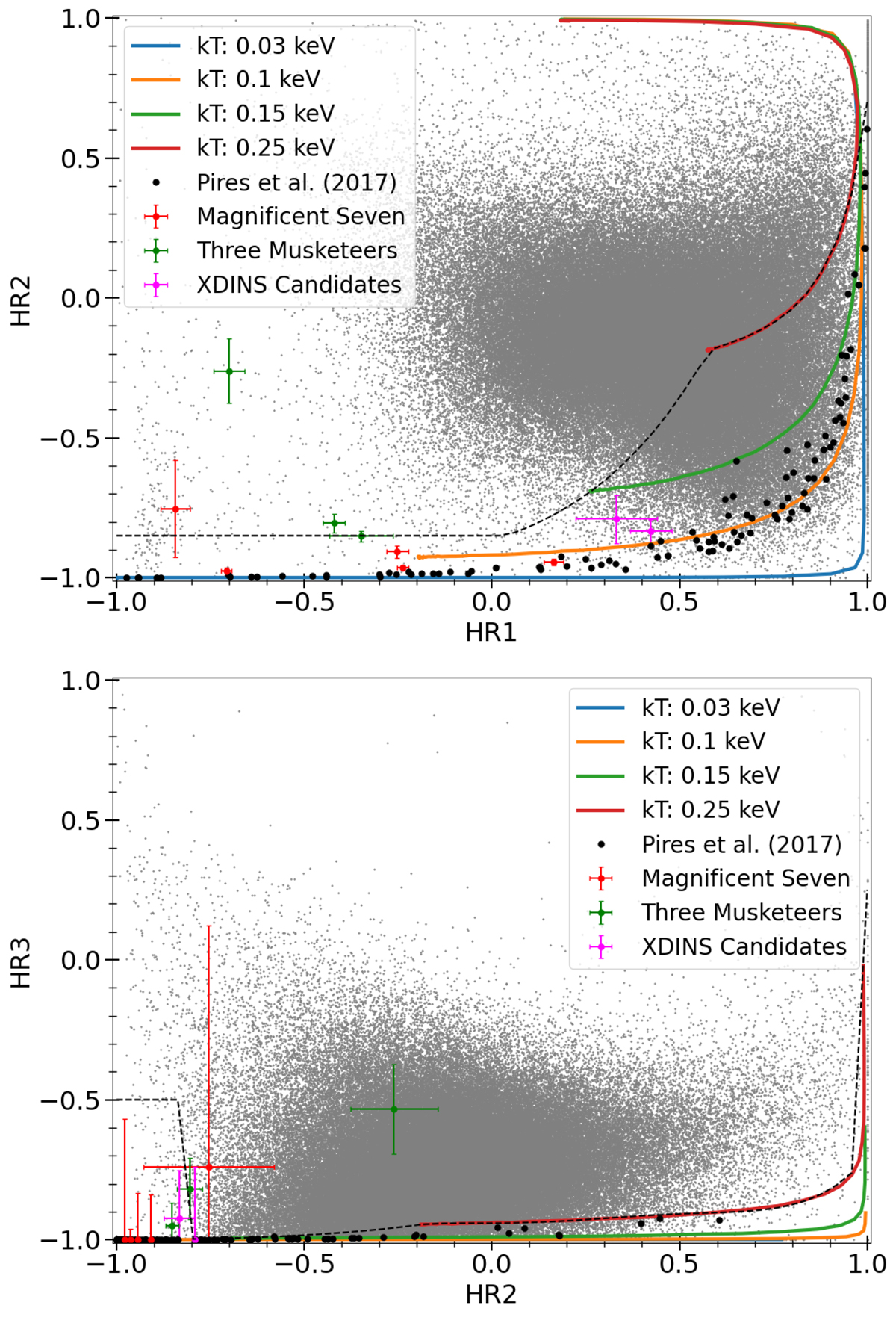Fig. 1.

Download original image
Hardness ratio diagrams indicating the applied selection (dashed black line), the distribution of simulated absorbed blackbody spectra (solid lines), and the position of the synthetic thermally emitting INS population of Pires et al. (2017; black circles). The known population of XDINSs (dubbed the ‘magnificent seven’), on the German part of the eROSITA sky, in red, and the three middle-aged thermally emitting rotation-powered pulsars, PSR B0656+14, Geminga, and PSR B1055−52 (dubbed the ‘three musketeers’) in green are indicated along with the location of the two INS candidates discussed in this work (magenta). The hardness ratios were computed between the 0.2–0.5 keV and 0.5–1.0 keV (HR1), 0.5–1.0 keV and 1.0–2.0 keV (HR2), and 1.0–2.0 keV and 2.0–5.0 keV (HR3) bands.
Current usage metrics show cumulative count of Article Views (full-text article views including HTML views, PDF and ePub downloads, according to the available data) and Abstracts Views on Vision4Press platform.
Data correspond to usage on the plateform after 2015. The current usage metrics is available 48-96 hours after online publication and is updated daily on week days.
Initial download of the metrics may take a while.


